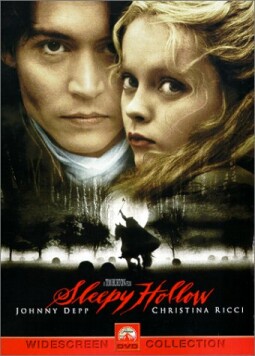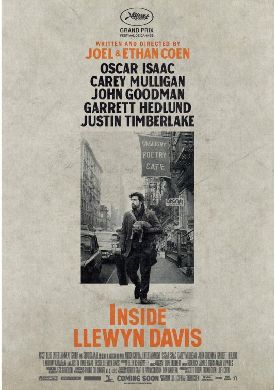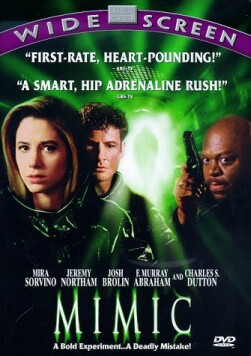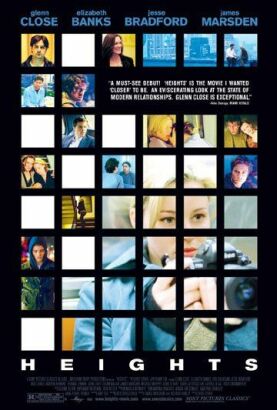Sleepy Hollow
Anyone who is still familiar with Washington Irving’s “Legend of Sleepy
Hollow” will find little to recognize in its Tim Burtonification as Sleepy
Hollow. Burton has filled this bit of belletrist whimsy from the now
almost-unimaginable past with his familiar, not to say trademark devices. All
takes place amidst spooky landscapes in grey and black, overlaid with mists and
interrupted by vertical surprises — windmills or ruins or stooks of grain or
scarecrows or bare trees that look like (and in fact turn out to be) monsters.
There is also unashamed magic and witchy symbols and human heads with eyeballs
and tongues that have a mind of their own. This is the stuff of old horror
movies lovingly re-created, but punctuated with rather good jokes. There is also
Johnny Depp, who makes a not entirely unrecognizable Ichabod Crane.
It is Burton’s clever idea to make Ichabod (Hebrew for “the glory has
departed”) not a village schoolmaster but a New York City police constable full
of up-to-date ideas about scientific crime detection, who is sent up the Hudson
by his superiors to investigate the depredation of the alleged Headless
Horseman. This allows the timid and awkward Mr. Crane to stumble his way towards
true love with the beauteous Katrina Van Tassel (a miscast Christina Ricci who
has yet to outgrow her baby-fat) as a representative of infant science. Thus on
encountering his first headless corpse he takes out his mysterious bag of
instruments and chemicals and sprinkles a powder on the ground, which produces
some kind of smoke or steam. “Ah!” he says. “There is a chemical reaction. It
shows there was a singular powerful thrust to the neck.”
Burton’s jokes tend thus to come at the expense of science and rationality,
as well as the overweening Crane. Confidently asserting that “The assassin is a
man of flesh and blood, and I will discover him,” the latter’s faith in science
and reason is fatally shaken by his own encounter with the Horseman (engagingly
played, in the scenes where his head is still attached, by Christopher Walken).
At length we see the scientific detective huddled up in bed with the covers
pulled up to his chin crying out to the terrorized but less
dramatically-inclined townspeople: “It was a Headless Horseman! ….It’s
all true!”
As indeed it is — and isn’t. Crane had been right to expect an assassin
of flesh and blood, and a very down-to-earth sort of plot to steal a legacy. But
the assassin, it turns out, is able to make use of the genuinely supernatural
ghostly rider by possessing its skull. That object’s possessor is able to
command its owner to sever heads more or less at will until it shall reclaim the
skull and proceed, intact at last, straight to Hell forever. Insofar as there is
to be any defense against the monster, we have to hope that it will come from
the white magic in which, by a remarkable coincidence, Katrina happens to be an
adept. Or else they could just get hold of the missing head.
All this is overexplained and excessively rationalized itself, and the device
of the remote-control Horseman swiftly becomes tedious. Like his hero, Burton is
“pinioned by a chain of reasoning” arising out of the essentially uninteresting
murder mystery and his own narrative fastidiousness. This of course will
scarcely bother the kids of 11 to 15 who won’t care about anything but the gross
details of severed heads and popping eyeballs — and the jokes. But for the
rest of us, Burton’s critique of pure reason doesn’t quite come off.
Discover more from James Bowman
Subscribe to get the latest posts to your email.






![Inglorious Bastards [QT, note SP]](https://jamesbowman.net/wp-content/uploads/2009/08/ingloriousbastards.jpg)
